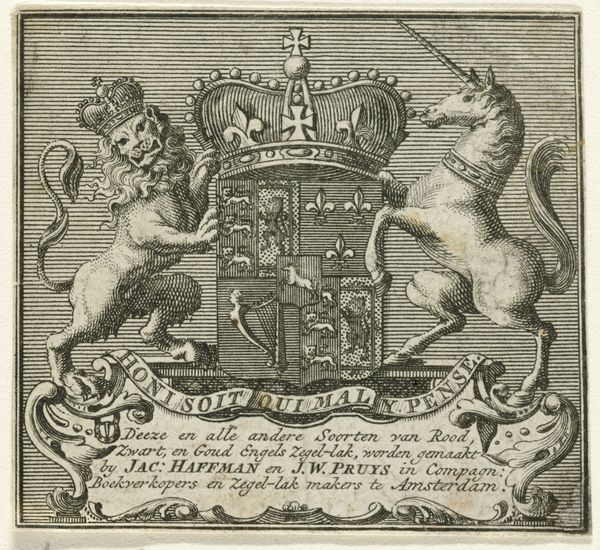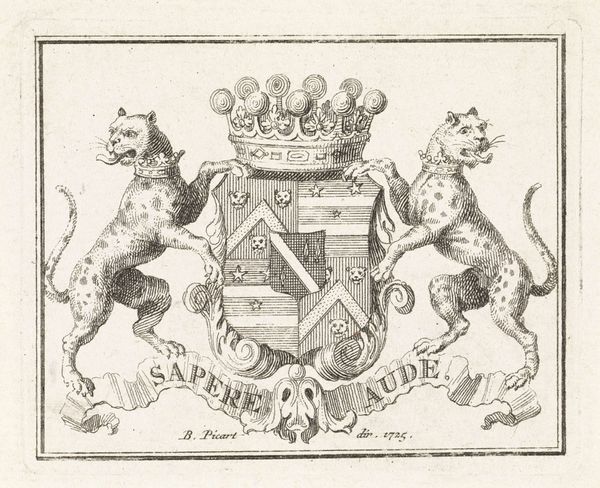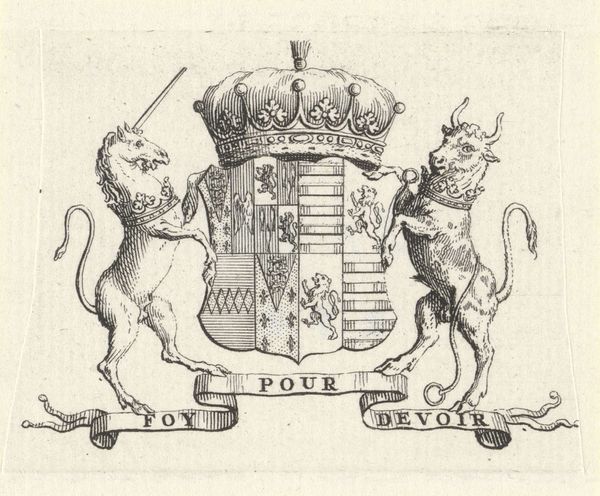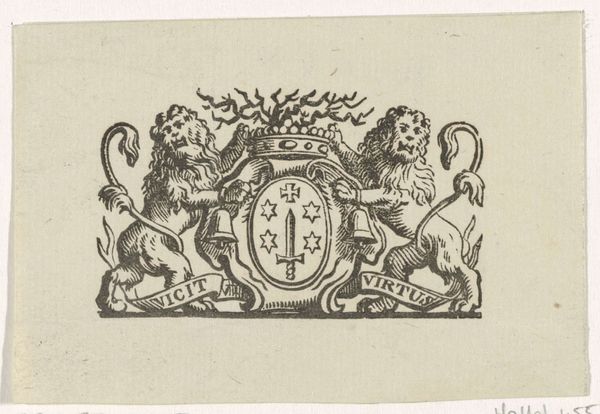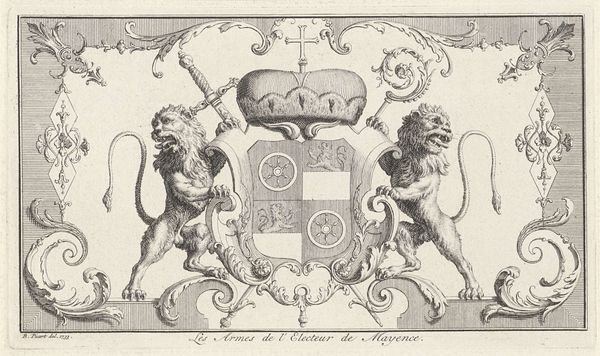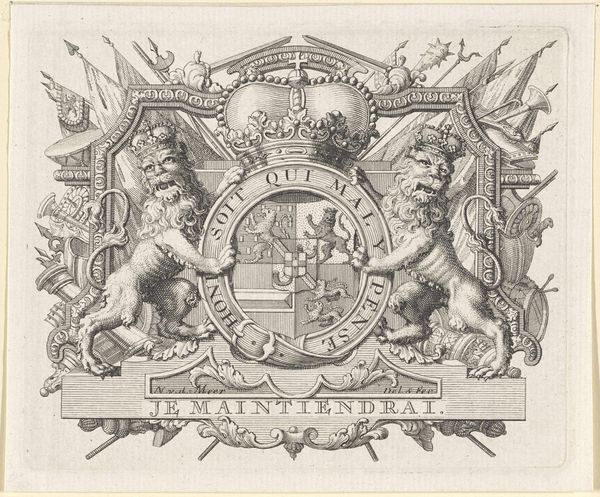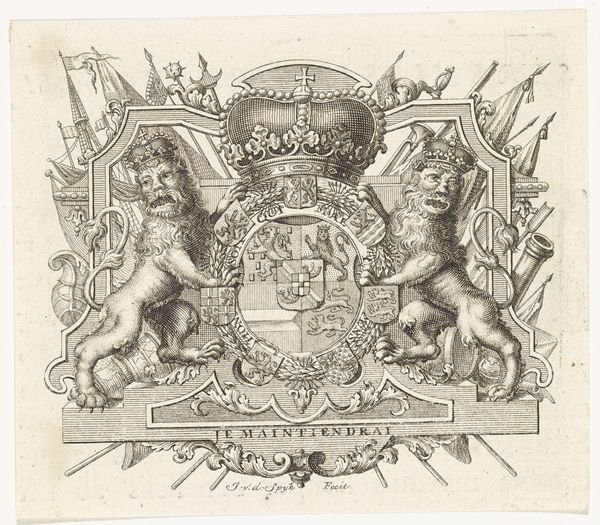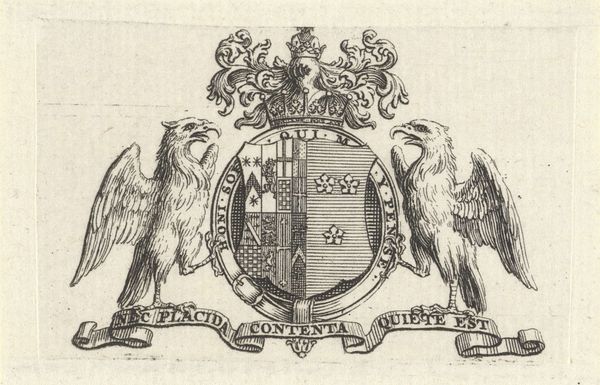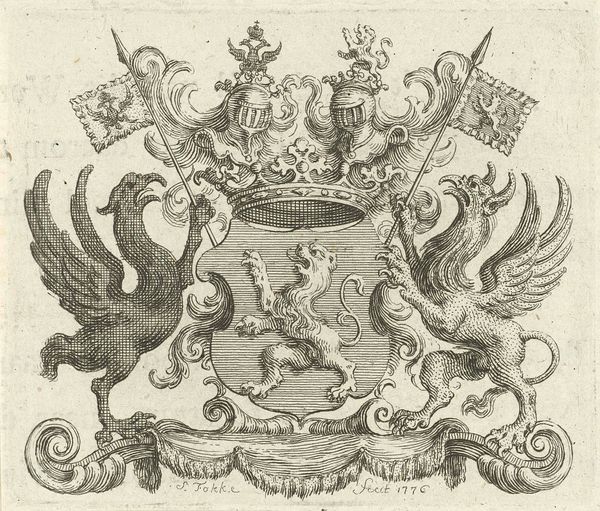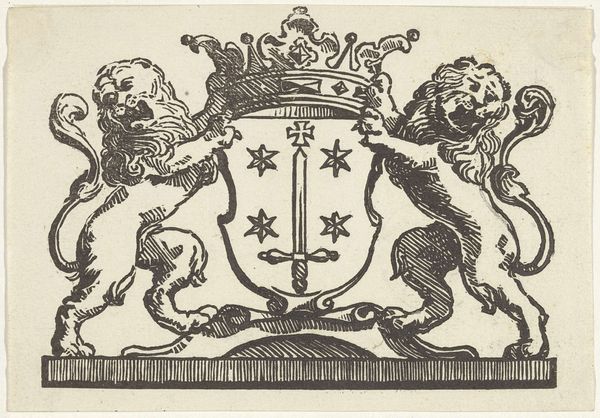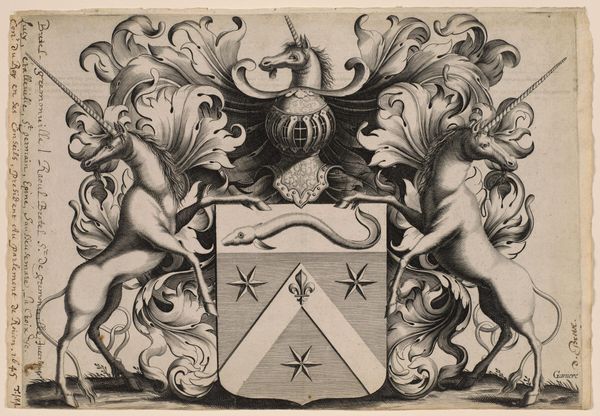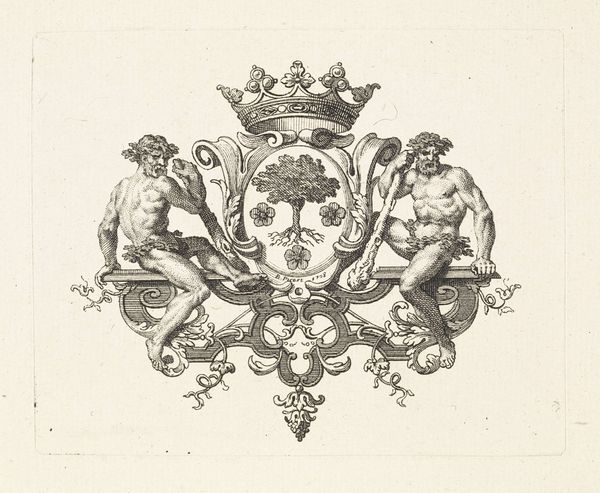
drawing, print, pen, engraving
#
drawing
#
allegory
#
baroque
#
pen drawing
# print
#
pen sketch
#
old engraving style
#
classical-realism
#
line
#
pen
#
engraving
Dimensions: height 62 mm, width 83 mm
Copyright: Rijks Museum: Open Domain
Curator: Good afternoon, welcome. I’d like to draw your attention to a print from 1731 by Bernard Picart, titled "Wapenschild geflankeerd door twee honden," which translates to "Coat of Arms flanked by two dogs." It’s a fascinating example of baroque engraving. Editor: My initial impression is one of curious contradiction! It's stately but…the dogs have such manic expressions. Almost cartoonish. Curator: Cartoonish, perhaps for our eyes now, but I'd argue that these creatures speak volumes about societal ideals of loyalty and guardianship during Picart's era. Dogs have a long, deep-rooted connection with humans, especially in heraldry, which served not just as identifiers but also vessels of collective aspirations. The artist invokes those connotations while perhaps also poking a bit of fun? Editor: I see what you mean. Tell me, what of that peculiar array of crosses inside the shield? Curator: Ah, the crosses. These are likely a visual pun representing ermine spots—common in heraldry, specifically for Brittany, France. Picart expertly plays with familiar visual cues, reinterpreting them. He creates this elaborate statement about power, class, and belonging, packaged in such painstaking detail, yet there's an undertone, subtle and perhaps subversive, that hints to the complexities beneath the surface. The motto on the banderole states A DEO ET REGE -- "From God and the King." It begs the question who sanctioned who. Editor: That interplay between tradition and possible critique is precisely what grabs me. It shows how even in seemingly formal commissions like this one, the artist could inject subtle commentary. This piece isn’t merely decorative, it’s an indicator of public art's engagement with sociopolitical consciousness. And I think it makes a really neat juxtaposition given the Baroque style generally aimed for clear, accessible symbolic grandeur. Curator: Exactly. We should be cautious in imposing today's standards to assess a work such as this from 1731, however, recognizing and appreciating that even something as apparently decorative carries layers of historical, social, and emotional coding is rewarding. Editor: I agree, and as such Picart’s engraving, for me, illustrates that inherent paradox—public art can endorse while inviting analysis. Curator: A perfect reflection, and it serves as an essential reminder: that art, at its core, always carries a duality, and offers more if we spend time listening.
Comments
No comments
Be the first to comment and join the conversation on the ultimate creative platform.
